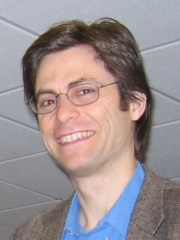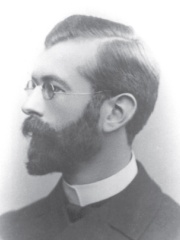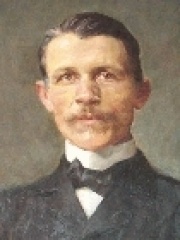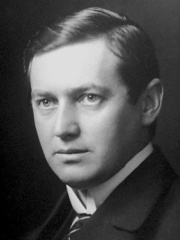
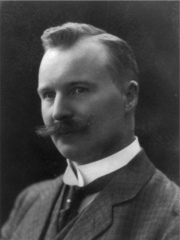
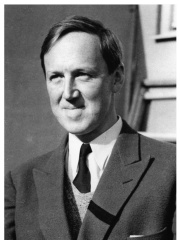
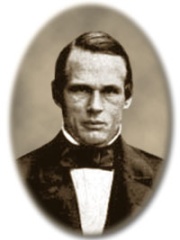
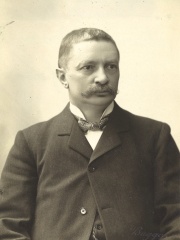
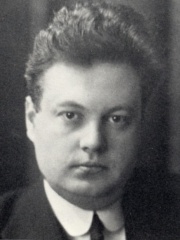
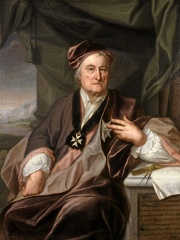
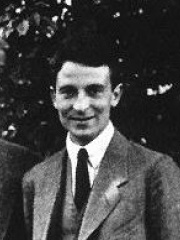
The Most Famous
PHYSICISTS from Sweden
This page contains a list of the greatest Swedish Physicists. The pantheon dataset contains 851 Physicists, 17 of which were born in Sweden. This makes Sweden the birth place of the 11th most number of Physicists behind Japan, and Poland.
Top 10
The following people are considered by Pantheon to be the top 10 most legendary Swedish Physicists of all time. This list of famous Swedish Physicists is sorted by HPI (Historical Popularity Index), a metric that aggregates information on a biography's online popularity. Visit the rankings page to view the entire list of Swedish Physicists.

1. Manne Siegbahn (1886 - 1978)
With an HPI of 77.16, Manne Siegbahn is the most famous Swedish Physicist. His biography has been translated into 77 different languages on wikipedia.
Karl Manne Georg Siegbahn (Swedish: [ˈmanːɛ ˈsiːgbɑːn]; 3 December 1886 – 26 September 1978) was a Swedish physicist who received the Nobel Prize in Physics in 1924 "for his discoveries and research in the field of X-ray spectroscopy".

2. Gustaf Dalén (1869 - 1937)
With an HPI of 76.84, Gustaf Dalén is the 2nd most famous Swedish Physicist. His biography has been translated into 84 different languages.
Nils Gustaf Dalén (Swedish: [ˈɡɵ̂sːtav daˈleːn] ; 30 November 1869 – 9 December 1937) was a Swedish engineer and inventor who received the Nobel Prize in Physics in 1912 "for his invention of automatic regulators for use in conjunction with gas accumulators for illuminating lighthouses and buoys".

3. Hannes Alfvén (1908 - 1995)
With an HPI of 75.49, Hannes Alfvén is the 3rd most famous Swedish Physicist. His biography has been translated into 76 different languages.
Hannes Olof Gösta Alfvén (Swedish: [alˈveːn]; 30 May 1908 – 2 April 1995) was a Swedish electrical engineer, plasma physicist and winner of the 1970 Nobel Prize in Physics for his work on magnetohydrodynamics (MHD). He described the class of MHD waves now known as Alfvén waves. He was originally trained as an electrical power engineer and later moved to research and teaching in the fields of plasma physics and electrical engineering. Alfvén made many contributions to plasma physics, including theories describing the behavior of aurorae, the Van Allen radiation belts, the effect of magnetic storms on the Earth's magnetic field, the terrestrial magnetosphere, and the dynamics of plasmas in the Milky Way galaxy.

4. Anders Jonas Ångström (1814 - 1874)
With an HPI of 74.91, Anders Jonas Ångström is the 4th most famous Swedish Physicist. His biography has been translated into 62 different languages.
Anders Jonas Ångström (; Swedish: [ˈânːdɛʂ ˈjûːnas ˈɔ̂ŋːstrœm]; 13 August 1814 – 21 June 1874) was a Swedish physicist and one of the founders of the science of spectroscopy. Ångström is also well known for his studies of astrophysics, heat transfer, terrestrial magnetism, and the aurora borealis. In 1852, Ångström formulated in Optiska undersökningar (Optical investigations), a law of absorption, later modified somewhat and known as Kirchhoff's law of thermal radiation.
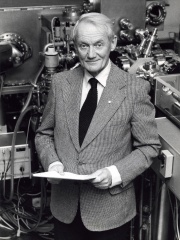
5. Kai Siegbahn (1918 - 2007)
With an HPI of 74.00, Kai Siegbahn is the 5th most famous Swedish Physicist. His biography has been translated into 63 different languages.
Kai Manne Börje Siegbahn (20 April 1918 – 20 July 2007) was a Swedish physicist who shared the 1981 Nobel Prize in Physics.

6. Johannes Rydberg (1854 - 1919)
With an HPI of 69.11, Johannes Rydberg is the 6th most famous Swedish Physicist. His biography has been translated into 45 different languages.
Johannes (Janne) Robert Rydberg (Swedish: [ˈrŷːdbærj]; 8 November 1854 – 28 December 1919) was a Swedish physicist known for devising the Rydberg formula, in 1888, which is used to describe the wavelengths of photons (of visible light and other electromagnetic radiation) emitted by changes in the energy level of an electron in a hydrogen atom.

7. Rolf Maximilian Sievert (1896 - 1966)
With an HPI of 68.34, Rolf Maximilian Sievert is the 7th most famous Swedish Physicist. His biography has been translated into 38 different languages.
Rolf Maximilian Sievert (Swedish: [ˈrɔlf maksɪˈmǐːlɪan ˈsǐːvɛʈ]; 6 May 1896 – 3 October 1966) was a Swedish medical physicist whose major contribution was in the study of the biological effects of ionizing radiation. The sievert (Sv), the SI unit representing the stochastic health risk of ionizing radiation, is named for him. He has been called the "Father of Radiation Protection".

8. Christopher Polhem (1661 - 1751)
With an HPI of 63.99, Christopher Polhem is the 8th most famous Swedish Physicist. His biography has been translated into 30 different languages.
Christopher Polhammar (18 December 1661 – 30 August 1751) better known as Christopher Polhem (), which he took after his ennoblement in 1716, was a Swedish scientist, inventor, and industrialist. He made significant contributions to the economic and industrial development of Sweden, particularly mining. He was ennobled by King Charles XII of Sweden for his contributions to Swedish technological development.

9. Oskar Klein (1894 - 1977)
With an HPI of 63.00, Oskar Klein is the 9th most famous Swedish Physicist. His biography has been translated into 29 different languages.
Oskar Benjamin Klein (Swedish: [ˈklajn]; 15 September 1894 – 5 February 1977) was a Swedish theoretical physicist now best remembered for the Klein-Gordon equation of relativistic quantum mechanics, the Kaluza-Klein theory, a unified field theory of gravitation and electromagnetism, and the Klein-Nishina cross section in quantum electrodynamics.
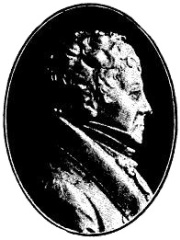
10. Wilhelm Hisinger (1766 - 1852)
With an HPI of 61.11, Wilhelm Hisinger is the 10th most famous Swedish Physicist. His biography has been translated into 18 different languages.
Wilhelm Hisinger (23 December 1766 – 28 June 1852) was a Swedish physicist and chemist who in 1807, working in coordination with Jöns Jakob Berzelius, noted that in electrolysis any given substance always went to the same pole, and that substances attracted to the same pole had other properties in common. This showed that there was at least a qualitative correlation between the chemical and electrical natures of bodies.
People
Pantheon has 17 people classified as Swedish physicists born between 1661 and 1967. Of these 17, 2 (11.76%) of them are still alive today. The most famous living Swedish physicists include Max Tegmark, and Sverker Johansson. The most famous deceased Swedish physicists include Manne Siegbahn, Gustaf Dalén, and Hannes Alfvén.
Living Swedish Physicists
Go to all RankingsDeceased Swedish Physicists
Go to all RankingsManne Siegbahn
1886 - 1978
HPI: 77.16
Gustaf Dalén
1869 - 1937
HPI: 76.84
Hannes Alfvén
1908 - 1995
HPI: 75.49
Anders Jonas Ångström
1814 - 1874
HPI: 74.91
Kai Siegbahn
1918 - 2007
HPI: 74.00
Johannes Rydberg
1854 - 1919
HPI: 69.11
Rolf Maximilian Sievert
1896 - 1966
HPI: 68.34
Christopher Polhem
1661 - 1751
HPI: 63.99
Oskar Klein
1894 - 1977
HPI: 63.00
Wilhelm Hisinger
1766 - 1852
HPI: 61.11
Vagn Walfrid Ekman
1874 - 1954
HPI: 59.62
Knut Ångström
1857 - 1910
HPI: 58.78
Overlapping Lives
Which Physicists were alive at the same time? This visualization shows the lifespans of the 14 most globally memorable Physicists since 1700.

